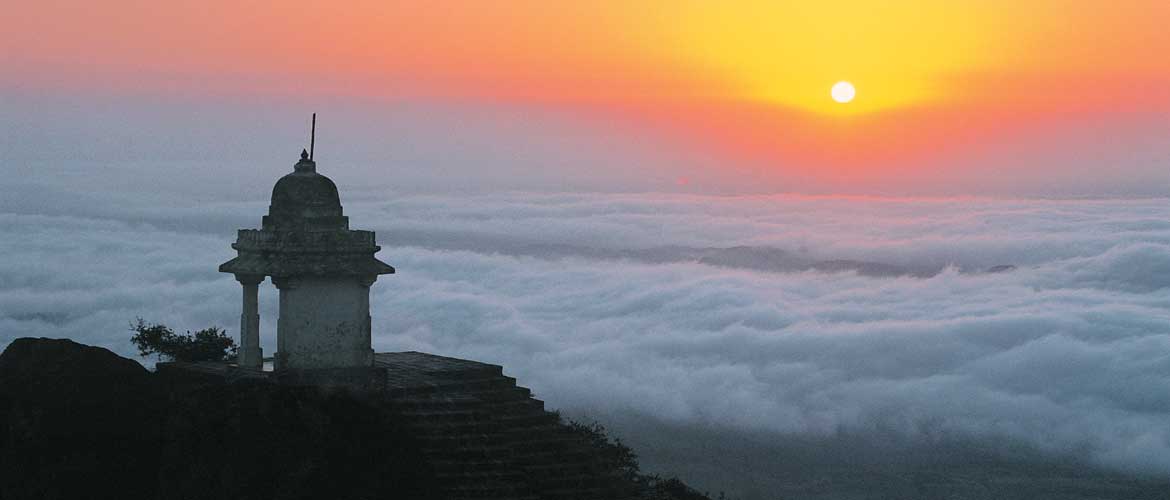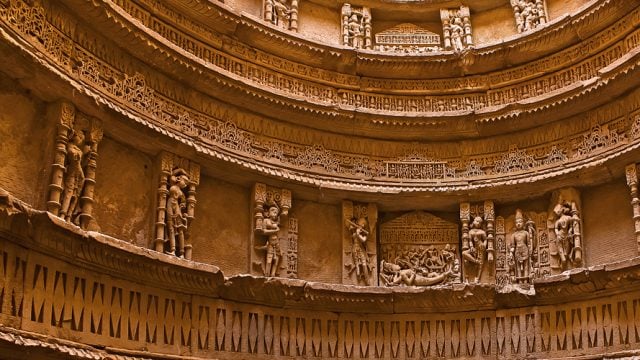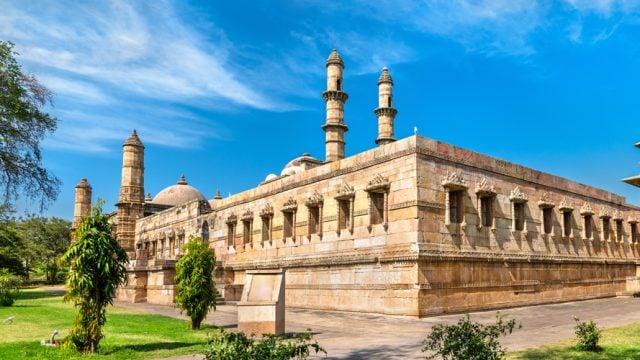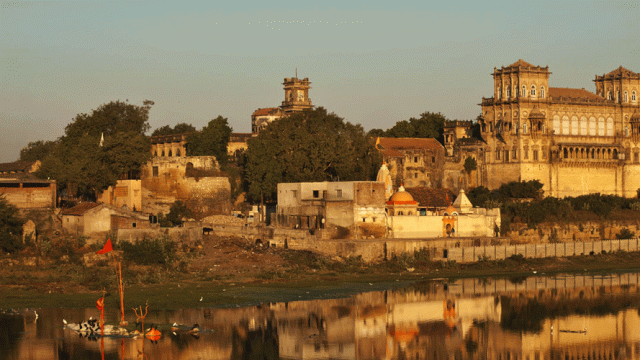For the devout Jain, Saurashtra is usually synonymous with the country’s main Jain pilgrimage site
THINGS TO SEE AND DO
There isn’t much to do in this one-street town, except to pay a visit to the few Jain temples, but the fact that so many use it as a base for the group of temples, located ten minutes away from the centre of town, means there is a growing number of stay and food options here, however rustic. In addition there is a cluster of dharamshalas, which have been built over the last couple of centuries for pilgrims making their way to Palitana.
Though the site dates back to around the 5th century, it has in fact undergone major renovations, and much of the construction that is currently visible can be dated to the 19th century. Over time, Shatrunjaya, and Palitana by association, became known as a temple-city, with every spot on the hill now considered holy and sacrosanct (the occasional sighting of trash heaps are a depressing rebuttal).
Over 3,500 steps, said to have been constructed around the 13th century, equating to a 4-km walk lead you to more than 900 structures that crown the hill (the numbers differ depending on whom you ask, but scattered between the 100 or so major temples are countless small shrines). The structures that populate the temple-hill are distributed over the two summits of the hill, and in the valley in between. The main temples are organized into enclosures, with a main temple and subsidiary shrines in each.

It can take a good couple of hours to climb up the hill via its wide steps; like all other hilltop pilgrimage centres, here too you will find dholis on hire, held by four bearers, to take those up who cannot do the hike themselves. It’s advisable to take breaks as you climb, instead of doing a sprint, both for your body, but also to take in and photograph the gorgeous views as you ascend. Additionally, it is likely to take you at least a couple of hours to walk around and explore the temples so, crowded as it may be, an early morning start is your best bet to cover most ground.
Near the entry gate, on your left, is a temple called the Babu Mandir, dedicated to Adinatha, the first Jain tirthankara. On the path you will find many small shrines as well as shelters for rest, which are equipped with free drinking water from fountains or reservoirs. The construction of these shelters over the centuries has been attributed to wealthy lay Jains. The many shrines are meant to immerse the pilgrim in a religious atmosphere from the very onset. As you start climbing, to your right will be the three-tiered circular Samavasaran Mandir, which was inaugurated in 1986 and took 14 years to complete. This temple is considered to be a three-dimensional representation of the samavasarana, or the general preaching of a tirthankara.
As you climb higher and higher, the views are simply astounding, as the length of the Shetrunji river comes into view. This river flows across the mostly dry plains around the region and was recently dammed.
The oldest object on the hill is considered to be an idol of Pundarika, who was not a tirthankara himself, but is worshipped on account of the fact that he had attained moksha. It was already a major tirtha by the fifth century, finding mention as it does in the crucial Svetambara canonical texts.

There are two main centres of pilgrimage on the hill, and at both you are likely to be crowded. The southern summit is the site of the principal temple, the Adishvar Temple dedicated to Adinatha; smaller temples and shrines surround it. The other chief pilgrimage destination is called the Nine Enclosures, with many temples within these, which are scattered on the northern peak as well as the valley between the two summits.
The Adishvar Temple features a white marble image of the tirthankara sitting in a lotus position, with the representation of the bull, his emblem, carved below. In the vestibule of the temple you can find an image of Adinatha’s (or Risabha, as he is also known) mother Marudevi, who is represented holding her grandsons Bharata and Bahubali while seated on an elephant.
The highest point of Shatrunjaya is the southern summit, which is where you can find the aforementioned Adishvar temple. There are simply too many enclosures and temples on the hill for even the most devout pilgrim to be able to explore in a single trip, but the Southern summit is a great choice to see the highlights.
The northern summit has what is known as the ‘Nine Enclosures’; in order to get here, you must go back down to the fork in the road that led to the southern summit and take the other branch. On your way to the northern summit, you will pass by a shrine of a Muslim saint, known as Angar Shah Pir; legend goes that this shrine is dedicated to a saint who tried to protect the Jain temples from the marauding Mughals that caused considerable damage around the 16th century.

Seven of the nine aforementioned enclosures are on the northern summit, while two are in the valley. These date from between the 17th and the 19th centuries and are variously dedicated to tirthankaras and their disciples. There are also some crucial inscriptions found here, for example one in the Sheth Hemabhai Tunk, which details the genealogies of Jain families that played a role in the construction of the temples. There are in fact said to be more than 500 inscriptions across the shrines on Shatrunjaya Hill, the earliest dating to the 13th century.
WHERE TO STAY AND EAT
The best place to stay here is the heritage homestay Vijay Vilas Palace (Cell: 09427182809; Tariff: ₹3,800) in Village Adpur, 6 km from Palitana. Built in the earlier 20th century, the palace has clean and spacious rooms. Sumeru Hotel (Tel: 02848-252327; Tariff: ₹1,115-1,632) is a Gujarat Tourism property near the railway station. Hotel Shravak (Tel: 02848-252428; Tariff: ₹500-950) opposite the bus stand has basic accommodation. Amid a flurry of controversy and complaints of communalism, Palitana was declared the world’s first vegetarian city in 2014, with the slaughter and consumption of meat completely banned in the area.
When to Go October to June; pilgrimage is not allowed during the monsoon Location In the Saurashtra region of Gujarat, Palitana is part of the district of Bhavnagar Air Nearest airport: Bhavnagar Rail Nearest rail: Palitana, Bhavnagar
heritage
Jainism
OT Getaway Guides





